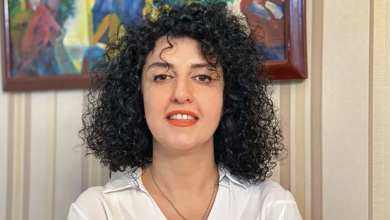IHRDC’s Submission to the UN Universal Periodic Review
The upcoming 20th UPR Working Group Session will take place in Geneva in October-November 2014. The IRI’s record was last reviewed in February 2010, to see video of that session click here. You can read the full contents of the 2014 submission below.
Introduction
During the previous cycle of periodic review of the Islamic Republic of Iran (IRI) in 2010, the Iranian delegation, when addressed with questions about the new Bill of Islamic Penal Code and discriminatory articles therein, refrained from responding to the criticisms on the merits. Rather they indicated that the Bill was not approved yet and “the pre-judgments” were “false”.
Now that the new Islamic Penal Code (IPC) has been adopted and published in the IRI official gazette, we are in a position to assess the substance of the IPC and revisit the concerns raised previously. While the new IPC does incorporate some reforms, the document as a whole advances closer to discriminatory precepts in Islamic Shari’a law, and, in many areas, is in clear conflict with international obligations of the IRI. The main areas of concern under the new IPC are briefly discussed below.
Death Penalty
The rising numbers of executions in the IRI has prompted deep concerns from the international community.[1] Despite the criticisms concerning the IRI’s application of the death penalty, the practice has not been meaningfully restricted under the new IPC.
Under the new IPC, many crimes, which do not meet the standard of the “most serious crimes” within the meaning of article 6 (2) of the ICCPR and the Human Rights Committee’s general comment No. 6 (1982) on the right to life, are still punishable with execution. They include adultery, homosexual acts, espionage, economic and political crimes, insulting a prophet, among others.[2] Additionally, pursuant to a different law, the Anti-Narcotics Act, the death penalty continues to apply to drug-related offenses, which also do not meet the “most serious crimes” as prescribed under international law. Executions for drug-related offenses constitute the highest percentage of executions in Iran (roughly 50% of executions in 2013), and the new IPC does nothing to abrogate that.
Stoning to Death
Under Shari’a law, it is considered s a hadd crime to have sex outside of marriage (called zina, i.e. illicit sexual intercourse), and is punishable with either 100 lashes or death by stoning. For a specific group of people, who are married and have the ability to have sex with their wife/husband, called mohsan (man) and mohsaneh (woman)[3], the hadd punishment of stoning to death applies.
The proposed Bill of Penal Code provided the possibility of replacing the punishment of stoning with hanging or flogging in special conditions (art. 221-5 of the original Bill). However, the Judicial and Legal Commission of Parliament—which was commissioned to pass the Bill—removed the same article and left no room for predictable disagreement from the Guardian Council. As a result, quite surprisingly, and contrary to the old IPC, the text adopted by Parliament was silent on this issue and made no provision with regard to adultery committed by a married man or woman (zina-ye-mohsaneh).
Accordingly, when the Bill of the new IPC was approved by the Guardian Council on January 18, 2012, it did not have any particular article penalizing adultery committed by a married man or woman (zina-ye-mohsaneh), which was punishable by stoning to death. The silence of the new IPC on this issue caused some observers to assume that stoning was abolished. But legal commentators strongly rejected this claim. They referred to article 220 of the Bill and Islamic jurisprudence (fiqh), according to which adultery committed by a married man or woman is a hadd crime punishable by a fixed and immutable sentence of stoning. Moreover, they argued that articles 172 and 198 of the new IPC clearly referred to stoning to death for adultery.[4]
Later, it became evident that the decriminalization of adultery and abolishment of stoning was not to be. After the Guardian Council gave its final approval of the new IPC on January 18, 2012 and the new IPC was sent for approval of the President, the Guardian Council abruptly stopped the process and returned the new IPC text to the start of the decision-making process—on the basis that further amendments were needed. The halt in the process was an unprecedented move which observers note may have come about from a belated realization on the part of the drafters that the omission of stoning from the language of the amended IPC could lead to the interpretation that such a punishment had been abolished. The revisiting of the IPC resulted in several additional changes in the IPC including stipulation of stoning to death as the punishment for zina-ye-mohsaneh. These events reflect how resistant the Guardian Council can be in adopting reforms of Islamic Shari’a rules.
In the Guardian Council’s letter, number 91/3/48063, dated September 16, 2012, the body claimed that the omission of stoning to death was against Islamic Shari’a and that it should be stipulated in the IPC. The Parliament, despite their initial approval of the amended IPC excluding this provision, conceded this point and changed article 225 accordingly. The new article 225 repeats the old rule that the punishment for zina-ye-mohsaneh shall be stoning to death. It, however, leaves open the possibility of replacing the punishment of stoning in some cases with execution by hanging, which has traditionally attracted less of an international media outcry, and it the most frequently used method of execution used in the IRI today.[5]
Corporal punishments
The new IPC continues to impose corporal punishments, in particular amputation of limbs and flogging for a wide range of crimes, including theft, consuming intoxicants, enmity against God (moharebeh) and sexual offenses. There is also a concern that the Judiciary may be motivated to reduce the IRI’s prison population through the more frequent application of cheaper and quicker methods of punishment such as flogging, in lieu of more resource-intensive imprisonment.
The retention of corporal punishment in the new IPC runs counter to the recommendation of the international community through UN bodies that the IRI should amend the IPC to end the imposition of corporal punishments. It should also be noted that the IRI has not ratified the Convention Against Torture (CAT) and therefore refuses to accept that all methods of corporal punishment, which the IRI claims to be immutable under the Islamic Shari’a, are indeed forms of torture and degrading punishments prohibited under international law.
Women
There are quite a few instances where Iranian laws violate the principle of legal equality of persons, which are enshrined in articles 14 and 26 of the ICCPR. Most problematic of them in both civil and criminal law, is considering a woman’s value half that of a man. Under Islamic criminal law, men and women are treated differently with regard to, inter alia, evidence, qisas (retaliation) and diya (blood-money). Therefore, for example, the testimony of a man has twice the strength of that of a woman (art. 199). Also, article 550 of the new IPC (similar to the article 300 of the old IPC) provides that:
“The diya (blood-money) for murdering a woman is half that of a man”.
Similarly, in the cases of bodily injuries that do not cause death, the diya for men and women follow the original rule of inequality.[6] However, quite surprisingly, the new IPC, though it reinforces the inherent inequality, has prescribed a new solution to alleviate the inequality of diya between men and women. The note of article 545 provides that:
“In all the cases of felony where the victim is not a man, the difference between the [victim’s] diya and the diya of a man shall be paid from the Fund for Compensation of Bodily Harms.”
Basically, the Fund for Compensation of Bodily Harms (FCBH) is established to compensate bodily harms caused by hit-and-run car accidents. In fact, the IRI, while still insisting on this inequality in article 550, has found an unusual solution to the problem. However, this cannot be considered as a permanent solution and a fundamental change towards equality for women.
First of all, FCBH is a non-governmental public body, which is funded through premiums paid by automobile drivers. Therefore, in addition to the fact that it is an odd idea that harms caused by murderers and intentional offenders should be compensated by funds collected from automobile drivers, FCBH has a limited capacity and it is doubtful that it can cover the extra burden this law creates in the long term.
Second, this article belongs to the chapter of “Diya for Life”, but there is no similar article in the chapter “Diya for Limbs”. It is therefore not clear if the FCBH arrangement will apply to bodily injuries suffered by women, in addition to murders. For instance, if a person causes a woman to go blind in both eyes, while the diya of the same injury for a man is full diya, the payable diya of the woman is half of the full diya of a man, and it is not stated that the difference is payable by FCBH.
Third, it is almost certain that this will not cover unintentional or semi-intentional deaths of women as it only refers to jenayat (felony), restricting the article to intentional offenses.
Adding to the provisions reinforcing gender inequality, an exemption for a husband who murders his wife in flagrante is retained in the new IPC. According to article 302(e) a husband is exempt from punishment in the event that he kills his wife (and/or her lover) if he catches them in the act of adultery. No such exemption is provided for the wife in the case where the roles are reversed.
Finally, it is clear that no effort is made to prescribe specific provisions on domestic violence within the new IPC. The IRI has failed to criminalize domestic violence and ensure that victims receive special protection by law. Such cases will still be treated under general rules of bodily injuries and blood money.
Children
Under Islamic Shari’a the age of criminal responsibility differentiates on the basis of sex and is set lower for girls than boys. During the previous UPR cycle, it was recommended that the IRI should eliminate discrimination on the basis of sex in determining the minimum age of criminal responsibility and increase the minimum for girls. The main challenge in this regard is application of corporal punishments and the death penalty to the juvenile. Execution of minors and the imposition of the death penalty for persons who have committed a crime while under 18 years of age, is prohibited by article 6, paragraph 5, of the ICCPR. In response to criticism of its executions of juveniles, the IRI has tried to justify, or outright deny, its cases of juvenile execution. One method the IRI has employed to alleviate criticism in this regard is by postponing the execution of the death penalty for juvenile convicts until they reach the age of 18.[7]
The new IPC has made some changes in this regard which need to be considered carefully. At first blush, the new IPC, similar to the old one, includes an article that exempts immature children from criminal responsibility:
Article 146- “Immature children have no criminal responsibility”.
Also, article 148 provides correctional measures for immature offenders. However, the new IPC fixes the age of 9 lunar years (8 years and 9 months) for girls and 15 lunar years (14 years and 7 months) for boys as the age of maturity (art. 147). So in fact, the hope that the minimum age of criminal responsibility in the IRI would be changed has still not come to fruition through these amendments.
Considering the changes made in this regard in the new IPC, one can confirm that there have been some desirable changes in respect to ta’zir punishments. As a result, if children commit ta’zir crimes before turning 18 years old, whether they are boys or girls, and whether they have reached the age of maturity or not, they shall be sentenced merely to correctional measures, as opposed to criminal punishment as prescribed by the previous IPC.
It is true that, article 90 of the new IPC may, in special conditions, exempt such children and juveniles from hudud and qisas punishments if they “do not understand the nature of the committed crime or its prohibition, or if there is a doubt about their mental development and perfection”.[8] However, when, for example, a 15-year-old boy or girl commits a murder, if according to the opinion of the judge, s/he understands the nature of the crime, and, Forensic Medicine confirms his/her mental development, s/he may be sentenced to qisas (i.e. the death penalty). Similarly, in the case of hudud crimes such as illicit sex (zina), sodomy (livat), homosexual behavior between girls (mosaheqeh), and other offenses, it is still possible for juvenile offenders to be sentenced to violent and inhuman punishments such as the death penalty, stoning to death, and flogging. So, the death penalty for offenders under 18 has not been abolished and is still a real possibility.
Religious minorities
Under the new IPC there are still differences in treatment of Muslims and non-Muslims, for example, with regard to the law of retaliation and blood money. If a Muslim kills a Christian, for example, the qisas (retaliation) cannot be requested by the heirs of the victim and they can only ask for blood money (arts. 301 and 310). In 2003, an amendment was made in the old IPC and equal blood money for religious minorities who are recognized in the Constitution was accepted. This has been repeated in article 548 of the new IPC.[9]
However, according to Article 13 of the Constitution, only Christian, Jewish and Zoroastrian Iranians have been recognized as non-Muslim religious minorities of Iran, which means these favorable provisions do not apply to believers of non-recognized religions such as Baha’is, Sufis, Mandanis, and others. The situation is even less favorable when it comes to non-believers, atheists, and those who have converted from Islam—or apostates. This is while under international human rights law, the term “religious minorities” covers all religions and beliefs held by minority parts of the population.[10] As a result, for example, if a Muslim kills a Baha’i, qisas (retaliation) is not possible, nor can the victim’s heirs claim blood money.
Moreover, with regard to the application of certain hadd penalties, the new IPC treats non-Muslims differently and sometimes harsher. For example, if a non-Muslim (whether married or not) commits zina (illicit sex) with a Muslim woman (art 224(c)), or commits livat (sodomy) with a Muslim man (note 1, art. 234), he shall be sentenced to death. But this is while, if the perpetrator is a Muslim, the death penalty may be given only if he is married (mohsan). Similarly if a non-Muslim man commits tafkhiz (livat without penetration) with a Muslim man, he shall be sentenced to death; while, if he is a Muslim he shall be given 100 lashes (note 1, art. 236).
Homosexuality
The new IPC continues to penalize homosexual relations although with some changes in comparison to the previous version. The most notable change is treatment of the active partner in livat (sodomy). Under the previous IPC both partners in sodomy would be sentenced to death. Under the new IPC, however, the active partner will only be executed if he is married, if he rapes the passive partner, or if he is a non-Muslim who has engaged in sodomy with a Muslim passive partner. Under the new IPC, the treatment of the passive partner remains unchanged and death sentence is provided for him irrelevant of marital status or religion.[11]
Crimes against security and public morality
Moharebeh, which is usually translated as “waging war against God”, and efsad-e-fel-arz (corruption on earth) have been the most vague and problematic offences in the IPC. The rules governing moharebeh and efsad-e-fel-arz have their origins in verses 5:33–4 of the Quran.[12] Penal practice in the IRI has been highly politicized and the Revolutionary Courts have frequently imposed the death penalty and harsh punishments on charges of moharebeh and efsad-e-fel-arz on, inter alia, political opponents. The new IPC has made some changes in this regard. For instance, unlike the previous IPC, it has expressly divided the offense of moharebeh from efasd-e-fel-arz and, adding a new concept (baqŷ: rebellion), has allocated a separate chapter to each one. As a result moharebeh has been provided an independent definition (art. 279)[13] with possible punishments of execution, crucifixion, amputation of right hand and left foot, or banishment (art. 282).
The changes made in respect of efsad-e-fel-arz in the new IPC are even more extensive. It has been given separate provisions and arguably its definition is the most vague and extensive provision of the new IPC.[14] Potentially, many civil, political, and economic actions can be regarded as efsad-e-fel-arz. As it is clear, under the IPC of the IRI, the definitions of moharebeh and efsad-e-fel-arz have been generously extended and are open to further interpretation to include some crimes of a highly political character, such as membership in opposition groups and supporting the overthrow of the Islamic regime.[15]
Sabb-ol-nabi (Insulting a Prophet)
Insulting a prophet (sabb-ol-nabi) is another serious offense in the Islamic Shari’a, incurring the death penalty for the perpetrator. Although it was mentioned in the previous IPC (art. 513), the new IPC includes a separate chapter and express provisions keeping this as a capital offense. According to article 262 of the new IPC, any person who insults the Prophet of Islam or other Great Prophets shall be considered as sābb-ol-nabi and punished by death. The same punishment has been provided for those insulting the twelve Shi’ite Imams and the daughter of the Prophet.
Mahdoor-ol-dam (Deserving of Death)
While the IRI Parliament has literally omitted the term “mahdoor-ol-dam” (deserving of death) in the new IPC, partly due to disagreements of Guardian Council with the Parliamnet, it is still very part of the Penal Code. Article 302 prescribes a list of instances where a perpetrator who has committed murder or caused intentional bodily injuries to other people shall be exempted from punishments of retaliation and diya. The first instance is where the victim has committed a hadd crime punishable by the death penalty. This simply means that anyone who arbitrarily kills an individual that has committed such crimes, e.g. efsad-e-fel-arz or livat, are given impunity from these punishments.
Although paragraph (d) of the same article requires that such crimes must be previously proven in a court of law, the punishment provided for ignoring this requirement is not the same as other cases of murder and bodily injury. In the case of a murder of a person suspected of committing zina, which may simply turn out to be a wrong accusation, the murderer, who may believe that they were acting in accordance with their religious mission, may only be sentenced to a maximum of 10 years of imprisonment. In comparison to the old IPC, it would be true to say that the relevant rules regarding arbitrary killing of people labeled as “mahdoor-ol-dam”, not only are not restricted under the new IPC but have been even more extended to cover bodily injuries and mutilation of limbs (art. 302(b)). This is contrary to General Comment No. 32 and clearly violates the right to equality before courts and to a fair trial.
Rule of Law
Counter to article 15 of the ICCPR, article 220 of the new IPC refers the punishment of the hadd crimes that are not explicitly provided for in the IPC, e.g. apostasy[16], to article 167 of the IRI Constitution and ultimately to “authentic Islamic sources and fatwas”. Since there is no unified set of “authentic” Islamic sources and fatwas, this “catchall” provision thereby allows for numerous, and not clearly defined, legal outcomes. This is a clear violation of the principle of legality, and the passage of article 220 has expressly announced the rule of fiqh (Islamic jurisprudence) over criminal cases. This should be regarded as one of the most significant and adverse changes made in the new IPC, given that it provides for seemingly limitless ambiguous and arbitrary outcomes.[17]
Conclusion
The recommendations of the HRC from the previous round of the UPR have clearly been disregarded in the new IPC of the IRI. The new IPC, like its older versions, still sticks to the strict rules of Islamic fiqh and is in undeniable conflict with human rights standards in the following areas:
- The ban on cruel, degrading or inhuman punishment;
- Equality and ban on discrimination on the basis of sex, gender, and religion;
- The principle that all persons are equal before the law;
- Freedom of religion and belief and freedom of expression;
- The ban on juvenile execution;
- The principle of legality of crimes and punishments (nulla poena sine lege).
[1] For instance, 292 executions were officially confirmed by the Iranian government in 2012. Combined with documentation of executions not officially announced by the government, the number of executions in 2012 totals at least 523 executions. (See: IHRDC Chart of Executions by the Islamic Republic of Iran – 2012, available at: ) The following year, in 2013, the total number documented through official, semi-official and unofficial sources increased with a total of 624 executions . (See: IHRDC Chart of Executions by the Islamic Republic of Iran – 2013, available at:
)
[2] Moreover, a specific group of crimes, called hudud, such as consumption of intoxicants, theft, procuring/pandering, that are not subject to capital punishment in the first occasion, if repeated three times and each time the sentence is given, on the fourth occasion these crimes are punishable by the death penalty (art. 136 of the new IPC).
[3] Article 226 of the new IPC reads: “Ihsan shall be established for both men and women according to the following:
(a) Ihsan of a man is defined as a status that a man is married to a permanent and pubescent wife and has had vaginal intercourse with her whilst he has been sane and pubescent and can have vaginal intercourse with her whenever he so wishes.
(b) Ihsan of a woman is defined as a status that a woman who is married to her permanent and pubescent husband and the husband has had vaginal intercourse with her whilst she was sane and pubescent and she is able to have vaginal intercourse with her husband.”
[4] For more details see: Mohammad Hossein Nayyeri, “The Question of ‘Stoning to Death’ in the New Penal Code of the IRI”, Iran Human Rights Documentation Center, available at:
.
[5] Article 225- The hadd punishment for zina of a man and a woman who meet the conditions of ihsan shall be stoning to death. Where the execution of stoning is not possible, upon proposal of the court of final judgment and approval of the Head of Judiciary, if the offense is proved by the testimony of witnesses, the man and a woman who have committed zina and meet the conditions of ihsan shall be sentenced to the death penalty [hanging]; otherwise, each one of them shall be given one hundred lashes.
[6] Article 554- “The diya of [harms to] limbs and bodily abilities, up to one-third of the full diya, is the same for a man and a woman; however if it reaches, or exceeds, one-third of the full diya, the diya of woman shall be decreased to half.”
[7] However, in some cases such considerations have been ignored completely and there is no room for any justification left. For instance, Alireza Mullah Soltani, born in December 1993, was hanged on September 21, 2011, in retribution (Qisas) for the murder of Ruhollah Dadashi. Four United Nations experts, the UN Special Rapporteurs on Iran, on summary executions, on independence of the judiciary and on torture, condemned the public execution by hanging of 17-year-old Alireza Molla Soltani, which was carried out on Sept 21, 2011. See:
[8] Article 90 – In respect of crimes punishable by hudud and qisas, if the offenders, who are under 18 years old but have reached the age of maturity, do not understand the nature of the committed crime or its prohibition, or if there is a doubt about their mental development and perfection, then, according to their age, they shall be awarded one of the punishments provided in this chapter.
Note – In recognizing the mental development and perfection, the court may ask for the opinion of Forensic Medicine or employ other means that it deems appropriate.
[9] “According to the order of the Supreme Leader, the diya (blood-money) of the religious minorities which are recognized in the Constitution shall be equal to diya of Muslims”
[10] United Nations Human Rights Committee, in its general comment on Article 18 of the ICCPR, declared that: “The terms ‘belief’ and ‘religion’ are to be broadly construed”. To make it more clear, it has stipulated that this article protects “theistic, non-theistic and atheistic beliefs, and is not limited to traditional religions”. It has also declared that freedom of religion is protected by this Article “unconditionally”; See: United Nations Human Rights Committee ‘General Comment No. 22: The right to freedom of thought, conscience and religion (art. 18)’ 2 (1993) CCPR/C/21/Rev.1/Add.4.
[11] For more information look at Iran Human Rights Documentation Center, Denied Identity: Human Rights Abuses Against Iran’s LGBT Community.
[12] 5:33-4 “The only reward of those who wage war against God and His messenger and spread corruption on the earth will be that they will be killed or crucified, or have their hands and feet on alternate sides cut off, or will be banished. Such will be their degradation in the world, and in the Hereafter theirs will be an awful doom. Save those who repent before ye overpower them. For know that God is forgiving, merciful.”
[13] Article 279- Moharebeh is defined as drawing a weapon on the life, property or chastity of people or to cause terror as it creates the atmosphere of insecurity. When a person draws a weapon on one or several specific persons because of personal enmities and his act is not against the public, and also a person who draws a weapon on people, but due to inability does not cause insecurity, shall not be considered as a Moharebeh.
[14] Article 286- “Any person, who extensively, commits: felony against the bodily entity of people, crimes against national and international security of the state, spreading lies, disruption in the economic system of the state, arson and destruction of properties, distribution of poisonous and bacterial and dangerous materials, and establishment of, or aiding and abetting in, places for corruption and prostitution, as it causes severe disruption in the public order of the state and insecurity, or causes harsh damages to the bodily entity of people or public or private properties, or causes distribution of corruption and prostitution in a large scale, shall be considered as mofsed-e-fel-arz [corrupt on earth] and shall be sentenced to death.”
[15] In addition to the extension made to the law, the Revolutionary Courts have broadened the concept even further in practice. In the post-June 2009 presidential election protests, Mohammad Amin Valian, a 20-year-old student, was sentenced to death by a lower Revolutionary Court for throwing three rocks during a protest. In fact, the Court interpreted a rock as a weapon and concluded that he was mohareb.
[16] Other examples are witchcraft (sehr) and innovation in religion (bed’at), which had been proposed as new hadd crimes in the Bill of the new IPC, but none were passed by Parliament.
[17] Many express details of harsh and inhuman punishments have been omitted in the new IPC, leaving an impression on the lay reader that there have been improvements and reforms in that regard. However, rather than lead to human rights improvements, the decision-making on those offenses has now been relegated Islamic sources, which as mentioned in the text of this submission are not consolidated, unified, or clearly defined. Given the potential for ambiguity and the wide latitude for individual discretion, this pivot will likely lead to the increased application of personal views and increased human rights abuses as a result.









